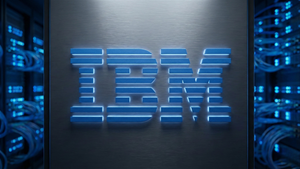
Water management company Northwest Pipe (NASDAQ: NWPX) reported revenue ahead of Wall Street’s expectations in Q1 CY2025, with sales up 2.6% year on year to $116.1 million. Its non-GAAP profit of $0.39 per share was 26.9% below analysts’ consensus estimates.
Is now the time to buy NWPX? Find out in our full research report (it’s free).
Northwest Pipe (NWPX) Q1 CY2025 Highlights:
- Revenue: $116.1 million vs analyst estimates of $111.9 million (2.6% year-on-year growth, 3.7% beat)
- Adjusted EPS: $0.39 vs analyst expectations of $0.53 (26.9% miss)
- Adjusted EBITDA: $10.12 million vs analyst estimates of $13.2 million (8.7% margin, 23.3% miss)
- Operating Margin: 4.8%, down from 7.7% in the same quarter last year
- Free Cash Flow was $1.18 million, up from -$30.66 million in the same quarter last year
- Market Capitalization: $403 million
StockStory’s Take
Northwest Pipe’s first quarter results reflected mixed operational dynamics, with revenue growth supported by resilient demand in both the steel pressure pipe (SPP) and precast segments, despite challenges from weather disruptions and new trade policies. CEO Scott Montross attributed the company’s performance to strong execution amid unpredictable market conditions, noting that significant downtime at production facilities and shipment delays—driven by both adverse weather and the implementation of new tariffs—dampened SPP revenue and margins. The precast segment, however, saw continued momentum on the residential side, offsetting softness in non-residential construction.
Looking ahead, management highlighted a rebound in SPP backlog and an improving non-residential precast order book as key factors for the remainder of 2025. Montross stated that recent large SPP orders should mitigate the ongoing impact of trade policy headwinds, and emphasized the company’s focus on restoring margins through efficiency initiatives and product mix improvements. Management maintained a cautiously optimistic outlook, citing persistent macroeconomic uncertainties and evolving trade policy as ongoing risks.
Key Insights from Management’s Remarks
Northwest Pipe’s leadership focused on operational adjustments and market dynamics that affected Q1 performance, while also outlining steps to address ongoing challenges. The primary factors influencing results were the effects of weather and tariff-driven cost pressures, as well as shifting demand across core segments.
- Tariff and Trade Policy Impacts: Management detailed how new trade policies introduced additional costs and shipment delays, particularly for SPP operations in Mexico. Scott Montross explained that efforts are underway to pass these costs onto customers and shift affected orders to alternative facilities, aiming to normalize operations in the coming quarters.
- Weather-Driven Downtime: The company experienced above-normal production downtime in both SPP and precast segments due to severe weather, with 13 days lost at SPP plants and 14 days at precast facilities. This contributed to lower production volumes and reduced overhead absorption.
- SPP Backlog Volatility: SPP backlog declined in Q1 due to light project bidding and delays, but management noted a significant intra-quarter recovery, highlighted by $60 million in new SPP orders received in a single week. These orders are expected to help mitigate cost pressures and support production in the second half of the year.
- Precast Order Book Growth: The residential precast business at Geneva continued to perform well, while the non-residential order book showed marked improvement after Q1, reversing customer shipment delays experienced in March. Management cited a near-record $64 million precast order book as a sign of strengthening demand.
- Margin Pressures and Cost Control: Gross margin compression was attributed to lower SPP production and cost absorption issues, partially offset by improved precast margins due to favorable product mix. Management reaffirmed its focus on cost reduction, operational efficiency, and targeted investments to enhance both segments’ profitability.
Drivers of Future Performance
Management provided an outlook emphasizing backlog recovery, efficiency improvements, and a strategic push into growth segments as the foundation for the rest of 2025. The company’s guidance is shaped by a combination of recovering project activity and proactive cost management.
- Backlog Recovery and Project Flow: The recent influx of SPP orders and a strengthening precast order book are expected to underpin revenue stability and production utilization through the remainder of the year.
- Margin Improvement Initiatives: Operational efficiencies, efforts to shift tariff-sensitive projects to less-impacted facilities, and investments in plant upgrades are expected to drive sequential margin improvements, particularly in SPP.
- Macroeconomic and Policy Risks: Management identified persistent risks from evolving trade policies, steel price fluctuations, and potential slowdowns in non-residential construction as factors that could affect demand and profitability.
Top Analyst Questions
- Brent Thielman (D.A. Davidson): Asked for specifics on the impact of new tariffs and the company’s strategy to mitigate related costs; management described efforts to shift affected projects and seek customer cost sharing.
- Brent Thielman (D.A. Davidson): Inquired about the conservative outlook for precast revenue in the second half of the year; management cited caution due to forecasting uncertainty but acknowledged possible upside.
- Brent Thielman (D.A. Davidson): Sought clarity on the elevated SG&A expense in Q1; CFO Aaron Wilkins attributed this to seasonality and higher incentive compensation, expecting expenses to normalize in subsequent quarters.
- Julio Romero (Sidoti): Probed the rebound in non-residential precast demand and shipment volumes post-March; management confirmed a significant recovery in April and strengthening customer activity.
- Ted Jackson (Northland Securities): Asked about steel price trends and potential demand impacts from tariffs; management stated that higher steel prices should not materially affect SPP demand and may improve project pricing and gross profit.
Catalysts in Upcoming Quarters
In the coming quarters, the StockStory team will be monitoring (1) the sustainability of the SPP backlog recovery and whether recent order momentum translates into improved production and margins, (2) further progress in absorbing and passing on tariff-related costs in both SPP and precast, and (3) continued expansion of the non-residential precast order book as an indicator of broadening demand. Any updates on the company’s M&A strategy or execution of the planned rebranding to NWPX Infrastructure will also be important to track.
Northwest Pipe currently trades at a forward P/E ratio of 11.9×. Should you double down or take your chips? The answer lies in our free research report.
The Best Stocks for High-Quality Investors
Market indices reached historic highs following Donald Trump’s presidential victory in November 2024, but the outlook for 2025 is clouded by new trade policies that could impact business confidence and growth.
While this has caused many investors to adopt a "fearful" wait-and-see approach, we’re leaning into our best ideas that can grow regardless of the political or macroeconomic climate. Take advantage of Mr. Market by checking out our Top 6 Stocks for this week. This is a curated list of our High Quality stocks that have generated a market-beating return of 176% over the last five years.
Stocks that made our list in 2020 include now familiar names such as Nvidia (+1,545% between March 2020 and March 2025) as well as under-the-radar businesses like the once-small-cap company Exlservice (+354% five-year return). Find your next big winner with StockStory today.






